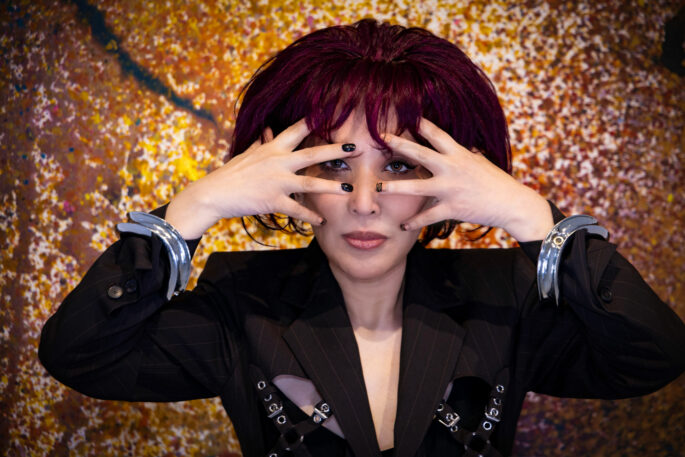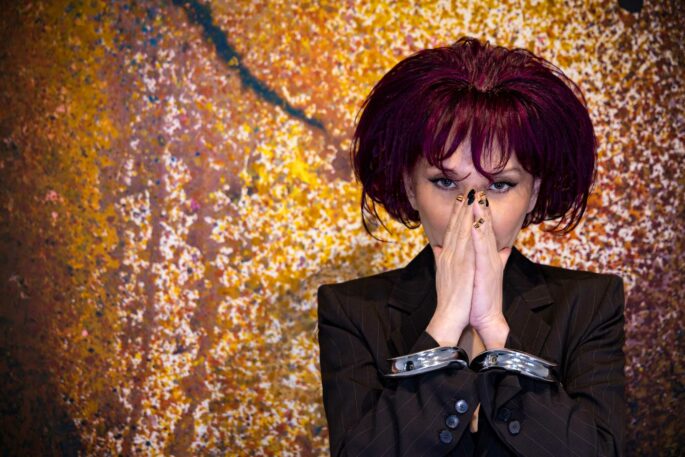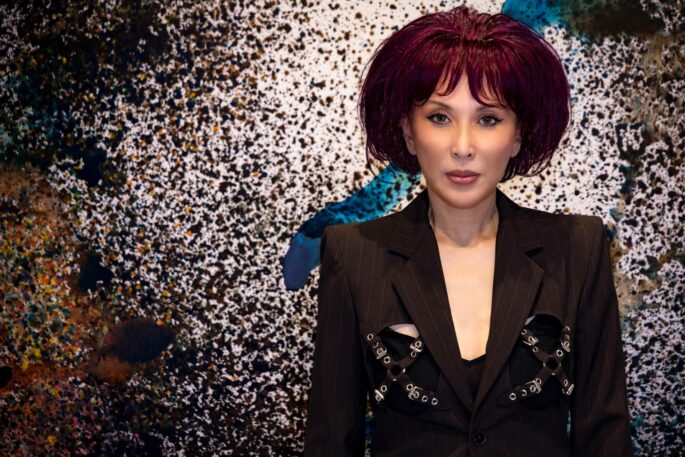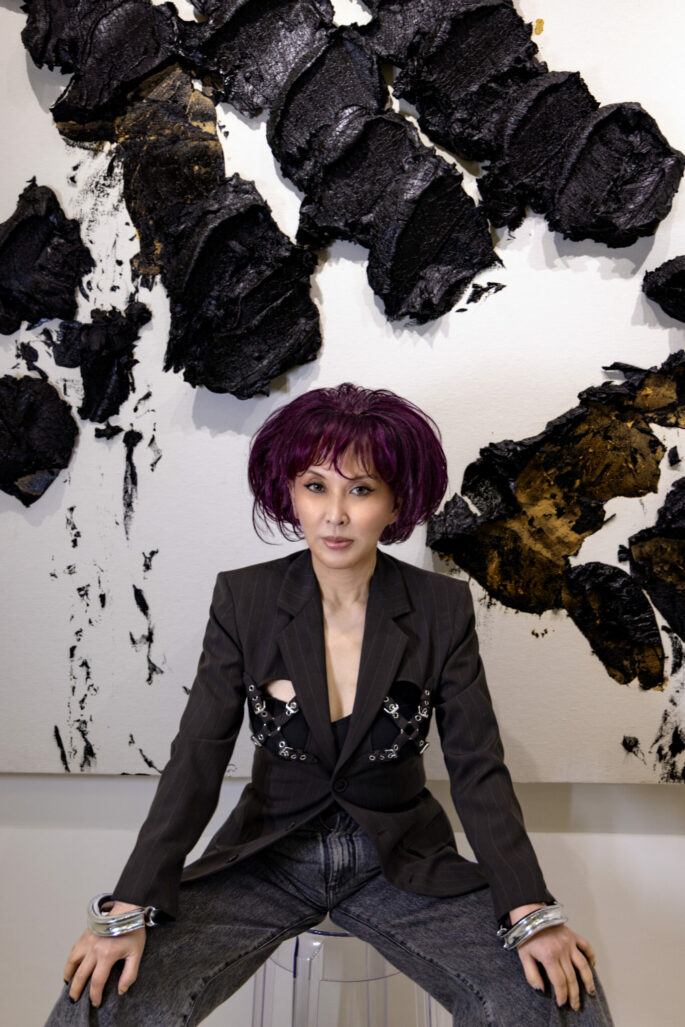
Pearl Lam: A Trailblazer Shaping the Landscape of Contemporary Art
By Rasika Sittamparam
“Follow your heart, trust your own judgement, and be dedicated to things you believe in. Find genuine enjoyment in what you do.” – Pearl Lam
Pearl Lam exudes a genuine commitment to authenticity. Over the span of two decades, she has provided a platform for some of the most accomplished talents in the realm of global Contemporary art. As a bold advocate for artists who skillfully convey profound concepts, narratives, and timeless philosophies through their art, this collector-turned-art entrepreneur has undeniably influenced the art world.
“Few people have a global view of the market as a whole,” New York Times writer Ted Loos described in a 2018 article describing Pearl Lam as a tour de force of the art world. A 2017 FT article describes her as “a powerhouse of China’s art world”, noting that her Hong Kong gallery seems to represent “the meteoric rise” of art in the region, compared to a decade ago.
The doyenne of international Contemporary art has taken on daring challenges in the ever-changing art landscape. Since the early 1990s Pearl Lam has built bridges between the world’s most prominent art markets and has introduced Chinese Contemporary artists to the Western world. Considered to be one of the pioneers who bridged the cultural gap between East and West in Contemporary art, Pearl Lam has been a permanent fixture of some of the major international fairs.

At the core of Pearl Lam’s convictions lies the profound belief that “art has no passport.” She has consistently voiced her critique of Western galleries that tend to represent Asian art predominantly through the lens of American or British individuals of Chinese descent, instead of discovering talents from the mainland. As a global citizen, Lam frequently travels between US, Asia, Europe, Africa and various other destinations dictated by the art world’s currents. Her firm conviction is that art and creative expression transcend borders, and that artists from every corner of the globe deserve rightful recognition on the international stage.
Pearl Lam has a knack for questioning the cultural understanding around art worldwide, which is dominated by Western perspectives. Her personal experience has especially given her a multi-faceted view. Being a UK-educated, Hong Kong-born member of the Chinese diaspora, the story of how she started her first gallery in Shanghai is an inspirational one. She herself was once influenced by the “West is Best” narrative, which quickly dissipated when her father made her launch their family business in mainland China.
Although Pearl was born into a privileged family, her venture into art was deliberate, but not at first smooth sailing. She fought to establish herself as a gallerist when her family initially derided the position by labelling it as the role of a glorified “shopkeeper”. In the early 1990s, wearing her signature purple hairdo, lipstick and Doc Marten boots (after returning from her accounting and business administration degree in the UK), she faced her late father’s wrath: he threatened to cut off her finances and gave her an ultimatum to start a property development business in Shanghai.
Equipped with below-par level of Mandarin, and Western ideals, she headed to the Chinese state in the early 90s. Initially, her mindset bore remnants of her colonial upbringing. However, her perspective quickly shifted when she crossed paths with Chinese artist Sun Liang, whose artworks compelled her to spent her first few months’ salary in them. Liang introduced her to the Shanghainese art world which was then a closed circle frequented by artists and academics.
As a Western-educated individual, Pearl observed the recurring themes of Daoism, Confucianism and Buddhism within Chinese art, which she initially perceived as clichéd. Curious about this artistic direction, she questioned why Chinese artists were focusing on ancient subjects rather than addressing more contemporary issues and street culture. In response, the artist explained that Chinese art draws upon the philosophies, techniques, and text styles that have existed for thousands of years. In contrast, the new conceptualism that Pearl alluded to, which forms the foundation of the Contemporary art we are familiar with today, originated in the Western world, primarily in textual form, during the 1960s.

Amazed by the rich tapestry of ancient history and culture Chinese Contemporary art was embedded in, Pearl Lam was astonished that little was known about it in the Western world, which then had surface-level understanding about what constitutes as art in the East, mainly focusing on China’s propaganda art instead. In the early 90s, she embarked on a mission to not only showcase the history of Chinese culture through Contemporary art, but to also promote the local artists whose works she had been moved by. She organised pop-up art exhibitions in Hong Kong, featuring Chinese contemporary artists until the 1997 financial crisis hit the Asia-Pacific region. Her parents told her to stop her “frivolous” art pursuits, which she firmly rebelled against.
She chose her gallery over her family’s property business and truly committed to the art world in 2003. In that year, the French cultural attache in China approached her to help them organise a huge cross-cultural exhibition featuring Chinese Contemporary art. This was a Damascene moment for Pearl, as she played a crucial role in presenting Chinese Contemporary art to the world via Awakening: La Mandarin, an event organised in conjunction with the China-France Culture Year in 2003, where a space of 30,000 sq ft containing 400 exhibits were shown across Beijing, Hong Kong and Paris. From that point onwards she wanted to have a permanent gallery space. She launched her first gallery in Shanghai in 2005.
A patron turned-gallerist, she entered the art world by first becoming a discerning, self-prescribed “shopaholic” who then turned her collections into gallery spaces. However, when the 2008 financial crisis hit, she realised that she needed to pursue her passion as a business rather than a foundation or a showcase gallery. She needed her dream project to make commercial sense, which wasn’t only crucial for her brand’s survival, but also for her patronage of the creators. She realised that the very stakeholders she championed – the artists – needed more exposure, and more collectors for their works. With this in mind, she pursued a decades-long project that created a collection of galleries across Asia Pacific, but with a highly international and entrepreneurial flair.
Through Pearl Lam Galleries, which has a commanding presence in Shanghai and Hong Kong, Pearl Lam is one of the core promoters of true contemporary Asian art, and not the ones which use Western media such as oil on canvas to depict copies of existing European art. She has played a crucial part in bringing international audiences to Hong Kong and essentially helping the city forge its reputation as one of the most powerful art hubs in the world since the mid 2000s. Most of what was then presented as Chinese art were heavily influenced by Western art making forms, such as oil on canvas. Pearl Lam identified this problem then and brought forward China’s Contemporary ink art practices which have roots that extend to approximately 4,000 years in the past. Pearl also has a special connection to ink, as her interest in art began in her early years when she was taught calligraphy and ink drawings, a subconscious but enduring connection to her Chinese heritage.
One of the most successful Chinese artists she introduced to the world is Zhu Jinshi. As one of the first Chinese artists to create abstract art, Zhu initially experimented with random brushstrokes and limited colour to create abstract paintings. He gradually developed his unique ‘thick painting’ style, which is usually applied with heavy colour and thick paint. He had his first solo exhibition in 2014 at Pearl Lam Galleries in Hong Kong.
Another successful artist was Ren Ri, a Beijing-based beekeeper the gallery introduced in 2015, who made honeycomb sculptures by manipulating the movement of bees. Many of the Chinese artists she introduces to global art fairs have a running theme of Chinese sensibilities combined with an awareness of global issues, with underlying themes of spirituality, simplicity and an appreciation for natural surroundings.
Pearl Lam consistently stays ahead of the ever-evolving landscape of international art, demonstrating a profound contemplation of the themes she advocates for on behalf of artists. Recognizing the influence of her prominent position, she effectively utilizes her platform to provoke the art world into critical reflection on contemporary issues. Since the early 2000s, she has actively fostered discussions on cultural colonisation, as she critiques the Western perception of Contemporary art, primarily shaped by conceptualism, for its failure to acknowledge the profound wisdom embedded within Eastern philosophies found in Contemporary Chinese art.
One of the key factors for Pearl’s eminence in the art world, to such a global extent, is her piercing eye for hidden talent. Being a true visionary, she has always had a passion for bringing out previously unknown artists to the highly discerning world of art academia. She banks on the power of solo exhibitions as platforms for not just introduction to art buyers, but also to showcase museum-quality works to the wider audience. In her international spirit, she has launched the works of not only contemporary Chinese artists to the Western markets, but also has promoted Western artists via the now international Hong Kong art market.

Pearl Lam is an example of someone who has forged her own successful path in life, and she wants to share her knowledge and wisdom in the challenging international art market. To further inspire entrepreneurs in the art space and act as a role model to particularly women, she is a member of the Forbes Business Council and is host of The Pearl Lam Podcast.

